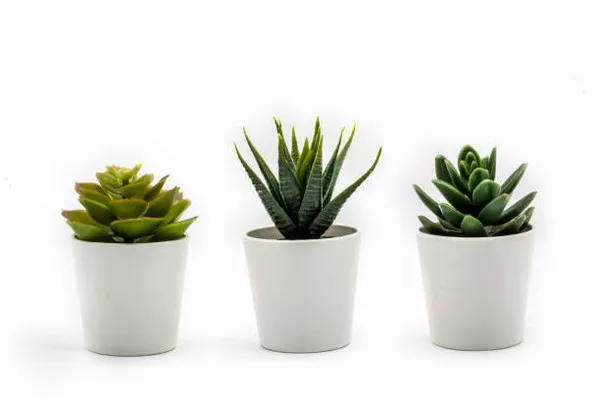Succulents have captured the hearts of plant enthusiasts worldwide with their unique appearances and ability to thrive in various conditions. When it comes to planting succulents, choosing the right growing medium is crucial for their health and longevity. In this comprehensive guide, we will explore the different components and factors to consider when selecting a growing medium for your succulents. From soil composition to drainage requirements, we will cover everything you need to know to create an optimal environment for these resilient plants.
I. Understanding Succulent Soil Requirements
Creating the ideal soil mix for succulents is essential for providing adequate drainage while ensuring proper moisture retention. Consider the following aspects when selecting or preparing the soil:
Well-Draining Soil:
Succulents require a well-draining soil mix that allows excess water to flow out easily. Avoid using heavy garden soil that retains moisture, as it can lead to root rot. Instead, opt for a soil mix specifically formulated for succulents or prepare one yourself.
Soil Composition:
To promote good drainage and prevent waterlogging, succulent soil needs to strike a balance between organic matter and inorganic components. Consider the following components when preparing the soil mix:
a. Organic Matter:Incorporate organic matter such as peat moss or coconut coir into the soil mix. These materials help with moisture retention without compromising drainage.
b. Inorganic Components:Add mineral components like perlite, pumice, or coarse sand to improve drainage and create air pockets within the soil. These components ensure better airflow around the roots.
Soil pH:
Most succulents prefer slightly acidic to neutral soil with a pH range of 6.0 to 7.0. Regular potting soil may have a higher pH, which can hinder nutrient availability. Adjust the pH if necessary by adding organic amendments like peat moss or sulfur, or use specific succulent soil mixes that are pH-balanced.
Commercial Succulent Soil Mixes:
If you prefer convenience, there are commercially available succulent soil mixes that provide the right balance of organic and inorganic components. These mixes often contain a blend of materials optimized for succulent growth, ensuring good drainage and proper moisture retention.
II. Adding Amendments to Enhance Soil Performance
Amending the soil with certain additives can further enhance its performance and provide additional benefits to succulents. Consider the following amendments:
1.Vermiculite:
Adding vermiculite to the soil mix helps improve moisture retention without sacrificing drainage. It absorbs water and releases it slowly over time, ensuring the roots have access to moisture when needed.
2.Coir Fiber:
Coir fiber, derived from coconut husks, is an excellent alternative to peat moss. It holds water well, retains moisture, and improves soil structure. Coir is also more sustainable and environmentally friendly than peat moss.
3.Compost:
Incorporating well-aged compost into the soil mix adds organic matter, enriches the soil with nutrients, and enhances moisture retention. However, ensure that the compost is properly decomposed to avoid any potential issues with pathogens or excessive nutrient levels.
III. Importance of Proper Drainage
Succulents are highly sensitive to waterlogged conditions, which can lead to root rot and other fungal problems. Ensuring proper drainage is crucial for their survival. Consider the following factors related to drainage:
1.Container Selection:
Choose containers with drainage holes at the bottom to allow excess water to escape. This prevents water from pooling around the roots and ensures adequate oxygen circulation.
2.Layering Techniques:
To further improve drainage, consider adding a layer of coarse gravel or small rocks at the bottom of the container before adding the soil mix. This layer acts as a drainage reservoir, preventing water from sitting directly in the root zone.
3.Avoiding Overwatering:
One of the most common mistakes made with succulents is overwatering. Water the plants sparingly and only when the soil has dried out completely. Before watering again, ensure that the top inch or two of the soil is dry.
IV. Maintaining the Growing Medium
Proper maintenance of the growing medium ensures optimal conditions for succulent growth. Consider the following guidelines:
1.Watering Practices:
Water the succulents thoroughly but infrequently. Allow the water to soak through the soil and drain out of the container. Discard any excess water that accumulates in the saucer or tray to prevent waterlogged conditions.
2.Adjusting Watering Frequency:
The watering frequency may vary depending on factors such as humidity, temperature, and the specific needs of the succulent species. Monitor the soil moisture level and adjust the watering schedule accordingly.
conclusion
Regardless of the type of growing medium you choose, ensure that the soil is well-draining and does not compact over time. Succulents prefer loose soil that allows excess water to flow freely, preventing root rot.
It’s important to note that whatever medium you use, regular watering practices must be adjusted accordingly. Succulents planted in well-draining soil will require less frequent watering compared to those in traditional potting mixes. Always allow the soil to dry out between waterings to prevent overwatering and associated problems.
Remember to choose an appropriate-sized container with drainage holes to further promote proper water drainage and prevent water accumulation at the roots. Providing suitable growing conditions, including the right soil, will contribute to the overall health and success of your succulent plants.


